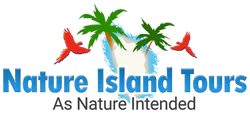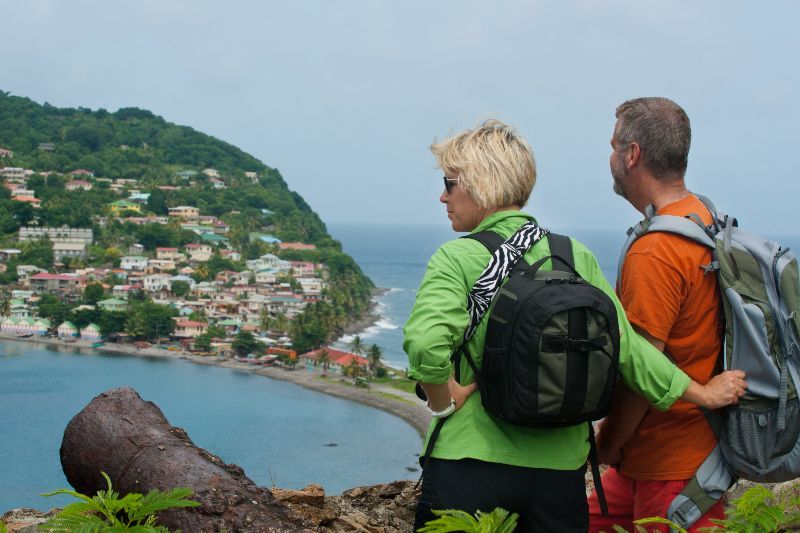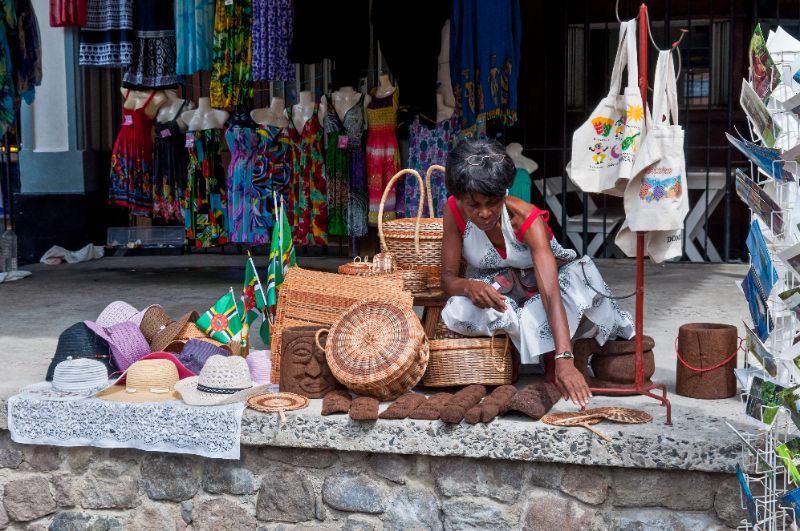History Culture
It is said that truth can best be found through one’s ‘experience’s’, perhaps then ‘experience’ is the truth one should seek.
Join us! Experience and explore, as we share the richness, beauty, taste, and culture of Dominica, “The Nature Island”.
The people of Dominica are some of the most friendly, genuine, honest, passionate, loving, and hardworking people you will find anywhere, and this culture is represented in all aspects of daily life in Dominica.
The climate on Dominica is tropical and due to its topography, the weather can vary by hour. The average daytime temperature is about 80*F (26*C), and the average temperature at night is about 70*F (21*C). Rainfall on Dominica has a broad range depending on elevation and whether you are on the East or West coasts from an average of 70″ (1800 mm) on the West coast and 196″ (5000 mm) on the East and a whopping 354″ (9000 mm) in the mountains. It’s a good idea to carry a light rain jacket, and footwear appropriate for a moisture-rich environment when exploring.
The fertile soils and climate of Dominica allow for year-round high-quality crop production with the most premium fruits and vegetables found anywhere in the world, without the need for use of toxic herbicides and pesticides. If it’s fresh, clean, healthful, organic food you’re after, you won’t find any better, anywhere else.
Clean Power
A substantial amount of the electrical power on Dominica is produced from several Hydroelectric plants, which are supplemented by diesel-electric generation. However, the government is working steadfastly towards supplying all capacity through clean renewable sources including Hydroelectric expansion and multiple Geothermal wells, currently under development. When these projects are completed Dominica will have the distinction of being the only Caribbean nation that is both climate-resilient, and energy independent, with one of the smallest carbon footprints in the world, and the potential to become a net exporter of clean, renewable energy to neighboring islands. In the event of the electrical grid being entirely fossil fuel-free, would punctuate the fact that Dominica is “The Nature Island”.
History & Culture
The History of Dominica’s human inhabitants is a storied and diverse one dating back as many as 5,000 years, long before European conquests ravaged the “new world”. Dominica is situated on the dividing line of the Windward and Leeward Islands with the French Islands of Guadeloupe and Marie-Gallante to the North and Martinique to the South.
Dominica is believed to have originally been settled around 3100 BC, by a people known as the ‘Ortoroids’. Though little evidence and study (of these people) are available in the region, it is thought that they prospered on the Island until around 400 BC. After which time the Carib and Arawak, (who came by way of the Orinoco river in South America) traveled through the Islands North settling on Dominica among other islands.
The Arawaks were subsequently assimilated and/or pushed out by the Kalinago who were also decended from the Carib’s. Though it is unclear exactly when this occurred, through artifact carbon dating it is believed to have been sometime around 1200 AD, nearly 300 years before Columbus’s first voyage to the Caribbean.
The Kalinago originally named the island ‘Waitikubuli’ translated or meaning “Tall is her body” no doubt referencing the Islands relatively tall mountains the tallest of which is Morne Diablotin at 4747’ in elevation. Upon Columbus’s arrival in 1493, he ignored the native name and using his peerless imagination, named the Island Dominica referring to the day of the week on which he first made landfall.
The Kalinago natives, however, resisted Spanish settlement and as a result of heavy losses on the Spanish side, the island was left alone. During the 17th & 18th centuries the French and British fought each other often forming treaties and partnerships with the Kalinago as well as the Maroons for control of the Island. Today there are roughly 2000 direct descendants of the original Kalinago still living on Dominica. Many still carry on the ancestral traditions of beautifully intricate basket weaving, wood carving, and subsistence fishing and farming. With claim and control over the coastal areas of the island going back and forth between the British and the French over the years yet finally ended with British control in 1763 though they still struggled in governing the interior of the island which was controlled by the Maroons.
In 1978 Dominica gained its independence from Great Britain and the government operates as a parliamentary democracy. Today the cultural influences of the Island are diverse, being a mix of African, Indigenous Kalinago, British, French, Spanish, Asian, Middle Eastern, and American. Though the primary language is English, there is a formative French and French Creole influence, which resulted in a beautifully unique and authentically descriptive form of creole, known as Patois.



